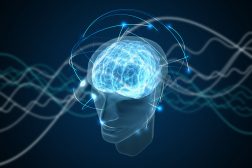
Circadian rhythm
n., sɜːˈkeɪdɪən ˈɹɪ.ð(ə)m
A biological rhythm based on a 24-hour cycle of biological processes
Table of Contents
Circadian Rhythm Definition
A circadian rhythm is an endogenously-driven biological rhythm with a period close to 24 hours.
Overview
A biological rhythm pertains to the synchronized cyclic pattern demonstrated by an organism as it responds to a particular stimulus. Apart from circadian rhythms, other forms of biological rhythms include diurnal rhythms, ultradian rhythms, and infradian rhythms. (Ref. 1) In brief, diurnal rhythms are a form of circadian rhythm; it is synchronized with the day/night cycle. Ultradian rhythms are biological rhythms with a cyclic period that is shorter than 24 hours. Infradian rhythms, in contrast, are biological rhythms with a period longer than 24 hours.
Circadian Rhythm Features
Biological rhythms may be endogenous (controlled by an internal biological clock) or exogenous (involves an external cue, i.e. zeitgeber). Circadian rhythms are endogenous (“built-in”). Various biological mechanisms are involved in producing a 24-hour rhythmic pattern. The term circadian came from the Latin term circa, meaning “around” or “approximately” and diem meaning “a day”. A rhythmic pattern is considered circadian when these features are present: (1) an endogenous free-running (approximately) 24-hour period, (2) a rhythm that is entrainable, i.e. capable of phase reset by environmental cues and synchronization to the 24-h day, and (3) exhibiting temperature compensation. (Ref. 2)
A circadian clock drives this form of biological rhythm. In humans and other mammals, the circadian clock is located in the suprachiasmatic nuclei (SCN) of the hypothalamus. (Ref. 1) A significant or prolonged disruption of this clock can have a negative impact on the individual’s wellbeing and daily activities. An abnormal circadian rhythm in humans is referred to as circadian rhythm disorder. An example is the circadian rhythm sleep disorder wherein the sleep-wake cycle is interrupted. It may be due to aging, genetic factors, medical conditions, or external factors. (Ref. 3, 4)
Examples of Circadian Rhythms
• Sleep-wake cycle – associated with day-night rhythms in melatonin production. In humans, the body secretes melatonin, a pineal hormone that induces sleep, at night as cued by light and darkness. (Ref. 4)
• Daily rhythms in body temperature – In humans, the body temperature follows a pattern where it is relatively high at daytime and then low at nighttime.
• Cognitive performance – Some animals (diurnals) are more alert and with high cognitive performance in the daytime. The opposite occurs in nocturnals. They are more alert at night time than in the daytime.
• Nyctinasty – plants seem to “sleep” at night and then “wake” up in the morning. The plants droop as if they are assuming a “sleeping position”. The legume plants are an example. They fold their leaves at night.
See Also
- Biological rhythm
- Diurnal rhythm
- Photobiology
References
- Hedge, A. (2013). http://ergo.human.cornell.edu/studentdownloads/DEA3250pdfs/biorhythms.pdf
- Johnson, C. (2004). Chronobiology: Biological Timekeeping. Sunderland, Massachusetts, USA: Sinauer Associates, Inc. pp. 67–105.
- Circadian Rhythm Disorders | National Heart, Lung, and Blood Institute (NHLBI). (2019, September 25). Nih.Gov. https://www.nhlbi.nih.gov/health-topics/circadian-rhythm-disorders
- Morgenthaler, T., Kolla, & Auger. (2012). Circadian rhythm sleep disorders. ChronoPhysiology and Therapy, 19. https://doi.org/10.2147/cpt.s21937
©BiologyOnline. Content provided and moderated by BiologyOnline Editors.



